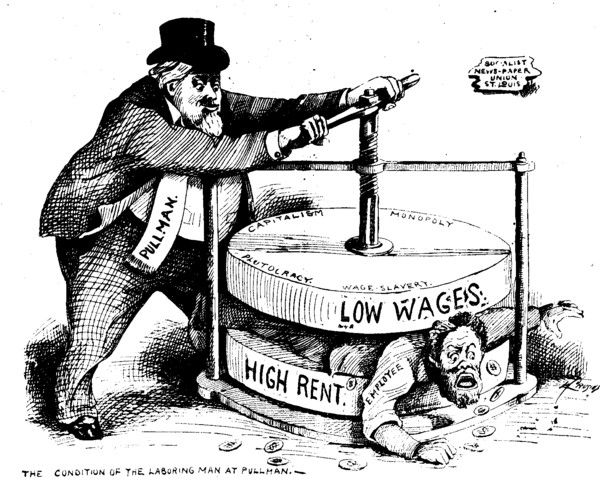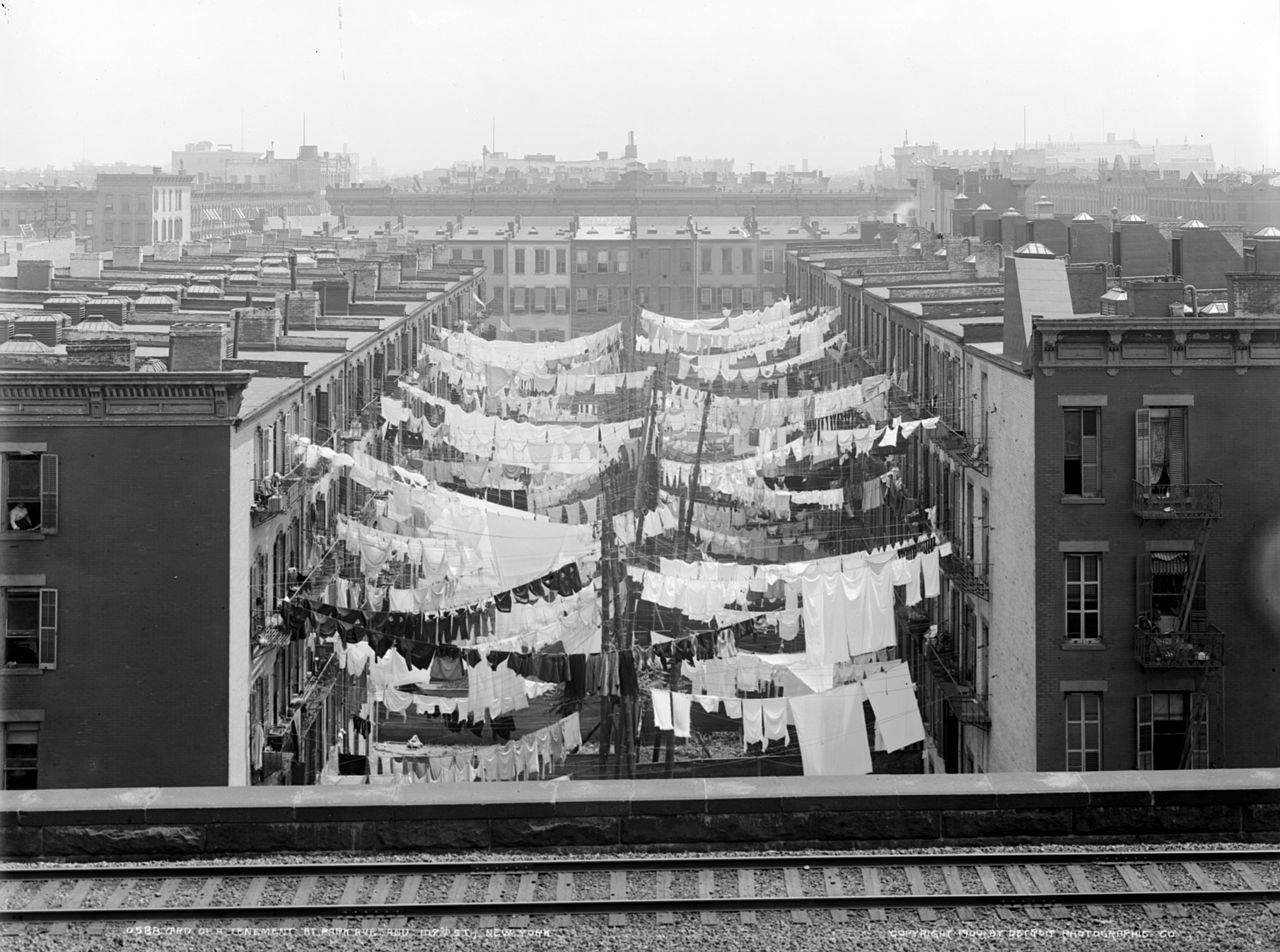🇺🇸AP US History
Unit 6 Overview: The Industrial Revolution (1865-1898)
7 min read•Last Updated on June 18, 2024
Eric Leiden
Riya Patel
Eric Leiden
Riya Patel
Overview of Period 6 (1865-1898)
Summary of Events
TRAINS, Trains, and more trains!!!! During this period, American Industry and the locomotive are the catalysts for incredible economic growth. In addition, the oil, steel and electrical industries explode in importance. Political greed runs rampant, the urbanization of America becomes obvious, and society explodes with immigrants looking for an opportunity in the Gilded Age. Progressives encourage government resources to improve the economy, society, and political environment.
Growing Industries
The economy features unparalleled growth as entrepreneurs like Andrew Carnegie (steel), J. D. Rockefeller (oil), and Westinghouse (electricity) improve upon efficiency and mass production. The acronym ROSE will serve you well in this chapter...Railroads, Oil, Steel, and Electricity. The robber barons or captains of industry reap the benefits of immigration and a surplus in labor to pay low wages in difficult working conditions. The result is the growth of the labor movement.
The Unions
Terrance Powderly creates the Knights of Labor, an unskilled labor union designed to bring about better wages and better conditions. Distrust following the Haymarket Riot leads to the downfall of the Knights of Labor. The American Federation of Labor, founded by Samuel Gompers, fares much better. The AFL was a skilled labor union and thus carried a bit more leverage into the negotiating room and was more effective in improving conditions for its members.
The Strikes
Labor unions used the strike as a means to combat poor working conditions and low wages. The Great Railroad Strike of 1877, the Homestead Strike of 1892, and the Pullman Strike of 1894 were significant labor strikes that took place during this time. These strikes were organized by workers to protest cuts in wages and poor working conditions, and they brought attention to the struggles of laborers during the Gilded Age.
However, during these strikes, the government often sided with big businesses and took actions to break the strikes, rather than support the workers. This was partly due to the influence of Social Darwinism, a belief that the strong should survive and the weak should be eliminated. It guided many politicians and businessmen, who thought that unions were a threat to the natural order of society and to the progress of industrialization.
This attitude of the government, combined with the power and resources of the big businesses, led to the failure of many of these strikes, and the workers' demands were not met. Despite this, labor unions continued to organize and advocate for workers' rights, and the strikes served as a catalyst for later labor reforms in the United States.

Disenfranchisement and Segregation
Black reformers such as W.E.B. Dubois and Booker T. Washington advocated for minority rights in society and the economy. Unfortunately, little progress is made due to the landmark court decision of Plessy vs. Ferguson allowing for separate but equal. The KKK terrorized Black businessmen and voters. Literacy tests and poll taxes further prevent political progress from being made at the polls.
Immigration
New immigrants begin to arrive from southern and eastern Europe making Chicago, New York, and Philadelphia their new homes. New immigrants settle in communities of familiar people creating areas such as Little Italy and Chinatown. The government restricts Chinese immigration through the Chinese Exclusion Act of 1882. Ultimately, immigrant families overcrowd cities and live in packed tenement houses with little sanitation or hygiene.

Social Reform
Reformers like Jane Addams and others established settlement houses such as Hull House to assist struggling immigrants and address issues of poverty and inequality. These settlement houses provided services such as education, healthcare, and job training to help immigrants and other marginalized groups assimilate into American society.
The Social Gospel movement also emerged during this time, advocating for social reform through religious means. Advocates of this movement believed that it was their Christian duty to address social issues such as poverty and inequality, and they encouraged people of means to take action to address urban problems.
Temperance and education reform were also key movements during the Gilded Age. The temperance movement sought to reduce or eliminate drunkenness through legislation, and education reform aimed to improve the quality of education and increase access to it for all. Both movements sought to bring about social reform by addressing issues that were seen as major contributors to poverty and inequality.
Political Corruption
Political bosses such as Boss Tweed of Tammany Hall manipulate voters to increase their own fortunes. Although appearing to provide services to its community, machine politicians often grew rich off of graft and bribery. Political patronage is commonplace and the Pendleton Act attempts to lessen patronage.
Agricultural Issues
Farmers face issues of low prices for their crops combined with high costs of production. The Grange develops into Farmers Alliances working to curb the power of big businesses. The Interstate Commerce Act attempts to address farmer complaints, however, it fails to solve the problems in agriculture. Farmers support the populist party and put forward a revolutionary plan under the Ocala platform. Although the Populists lose the election, their legacy is seen in the Progressive achievements of the early 20th century.
The Economy
The leading issue of the time was the money supply. Farmers advocated for free silver to increase the money in circulation resulting in an inflationary policy. Debates over tariffs were intense as farmers tended to support low tariffs in contrast to Industry’s call for higher protective tariffs. Discontent elevates following the depression of 1893 placing tariff and currency reform as the most important issues in the election of 1896.
The Election of 1896
The young Democratic candidate, William Jennings Bryan, is supported by Democrats and Populists. Clinging to a pro-silver policy, Bryan delivers his Cross of Gold speech electrifying the crowd in support of the inflationary policy. Veteran republican candidate, William McKinley, wins the election and coincidentally the discovery of gold in Alaska causes inflation. Farmers and Businesses took advantage of the rising economy and America soon became the most industrialized nation in the world.

The Arts
During the Gilded Age, artists such as Mark Twain and Stephen Crane used their works to provide a glimpse into the society and culture of the late 1800s. Their works depicted the lives and struggles of people during that time period, providing a personal and intimate portrayal of the era.
In addition, architecture and music also played an important role in providing an escape from the harsh realities of life. Architects like Frank Lloyd Wright created innovative designs that broke away from traditional architectural styles, and music such as that composed by Scott Joplin, provided a form of entertainment and cultural expression.
Sports, such as boxing, baseball, and football, also emerged as popular pastimes. These sports provided an opportunity for people to take a break from their daily lives and root for their favorite athletes. They also provided local and national heroes for people to look up to and admire.
Main Events and Dates
- 1865: The Civil War ended with the surrender of Confederate General Robert E. Lee, effectively ending slavery in the United States.
- 1877: The Reconstruction Era officially ended with the withdrawal of federal troops from the South, and the Great Railroad Strike occurred, which was a nationwide strike by railroad workers protesting wage cuts.
- 1882: The Chinese Exclusion Act was passed, which effectively banned Chinese immigration to the United States for a period of ten years.
- 1886: The Haymarket Riot occurred in Chicago, where a peaceful labor demonstration turned violent, resulting in the deaths of several workers and police officers.
- 1890: The Sherman Anti-Trust Act was passed, which was intended to curb the power of monopolies and trusts.
- 1892: The Homestead Strike occurred, in which steelworkers went on strike to protest wage cuts, and the strike ultimately failed.
- 1893: The Panic of 1893 was a severe economic depression that affected the United States and parts of Europe.
- 1896: The Pullman Strike occurred, a nationwide strike by railroad workers protesting wage cuts and poor working conditions, Plessy vs. Ferguson was a Supreme Court case that upheld the constitutionality of racial segregation, and the Election of 1896 was won by Republican candidate William McKinley.
Major Themes
- Technology and mass production lead to incredible business growth and the demand for more resources of production.
- Internal and external migrations encourage phenomenal economic, social and political change.
- Art, literature, and entertainment provided a distraction from the negative impacts of urbanization and industrialization, such as poverty and inequality.
- Progressive reformers emerged during this time, calling for government intervention to address these issues and improve conditions for workers.
- Progressive reformers also called for workplace equality, social opportunity, and temperance legislation, and advocated for the rights of women and minorities. Political
- Political disputes emerge over corruption, currency debates, and women’s suffrage. disputes also emerged during this time, including debates over corruption, currency, and women's suffrage.
How to Study Unit 6?
Creating a study plan and setting up a dedicated study space with a good environment can help you stay focused and motivated. It is important to have a good understanding of the key timeline and historical figures in order to fully understand the context of the events and movements covered in the APUSH exam.
Using a Pomodoro study timer to break up your study sessions into intervals and taking regular breaks can help improve your productivity and prevent burnout. It's also a good idea to study with friends as they can provide motivation and support, and you can also review and discuss the material together. Additionally, you can also try to practice with previous years' AP exam papers, which you can find online, and get familiar with the format and question types. Good luck with your exam!
In what ways did the Social Gospel movement and settlement houses like Hull House represent different approaches to addressing urban poverty during the Gilded Age?
In what ways did the Social Gospel movement and settlement houses like Hull House represent different approaches to addressing urban poverty during the Gilded Age?

